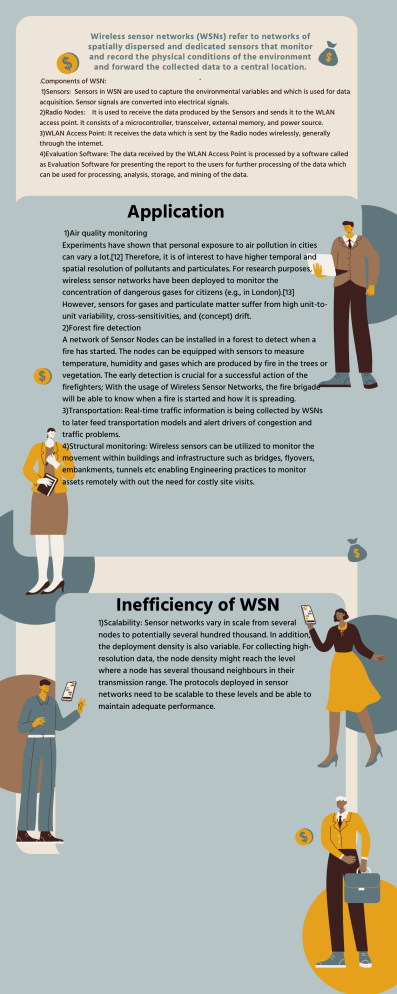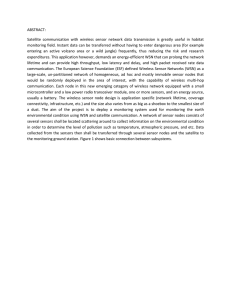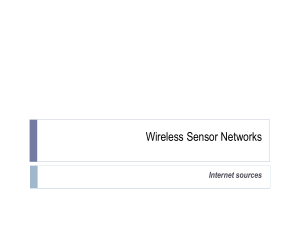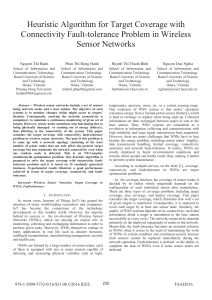Wireless Sensor Networks: Components, Applications, Inefficiencies
advertisement

Wireless sensor networks (WSNs) refer to networks of spatially dispersed and dedicated sensors that monitor and record the physical conditions of the environment and forward the collected data to a central location. . .Components of WSN: 1)Sensors: Sensors in WSN are used to capture the environmental variables and which is used for data acquisition. Sensor signals are converted into electrical signals. 2)Radio Nodes: It is used to receive the data produced by the Sensors and sends it to the WLAN access point. It consists of a microcontroller, transceiver, external memory, and power source. 3)WLAN Access Point: It receives the data which is sent by the Radio nodes wirelessly, generally through the internet. 4)Evaluation Software: The data received by the WLAN Access Point is processed by a software called as Evaluation Software for presenting the report to the users for further processing of the data which can be used for processing, analysis, storage, and mining of the data. Application 1)Air quality monitoring Experiments have shown that personal exposure to air pollution in cities can vary a lot.[12] Therefore, it is of interest to have higher temporal and spatial resolution of pollutants and particulates. For research purposes, wireless sensor networks have been deployed to monitor the concentration of dangerous gases for citizens (e.g., in London).[13] However, sensors for gases and particulate matter suffer from high unit-tounit variability, cross-sensitivities, and (concept) drift. 2)Forest fire detection A network of Sensor Nodes can be installed in a forest to detect when a fire has started. The nodes can be equipped with sensors to measure temperature, humidity and gases which are produced by fire in the trees or vegetation. The early detection is crucial for a successful action of the firefighters; With the usage of Wireless Sensor Networks, the fire brigade will be able to know when a fire is started and how it is spreading. 3)Transportation: Real-time traffic information is being collected by WSNs to later feed transportation models and alert drivers of congestion and traffic problems. 4)Structural monitoring: Wireless sensors can be utilized to monitor the movement within buildings and infrastructure such as bridges, flyovers, embankments, tunnels etc enabling Engineering practices to monitor assets remotely with out the need for costly site visits. Inefficiency of WSN 1)Scalability: Sensor networks vary in scale from several nodes to potentially several hundred thousand. In addition, the deployment density is also variable. For collecting highresolution data, the node density might reach the level where a node has several thousand neighbours in their transmission range. The protocols deployed in sensor networks need to be scalable to these levels and be able to maintain adequate performance.





